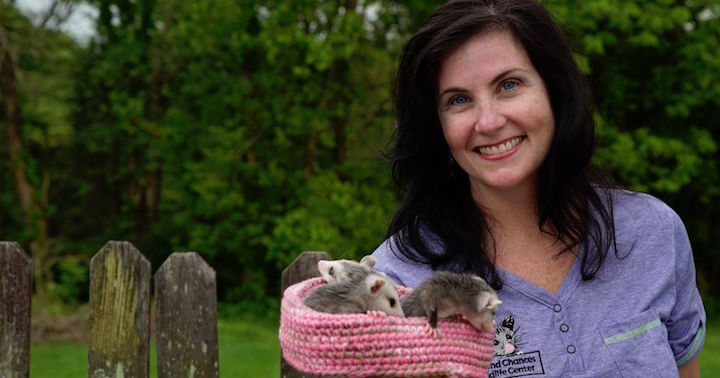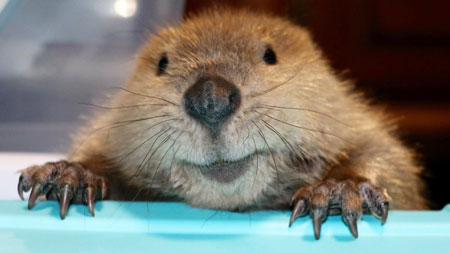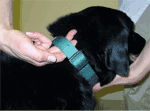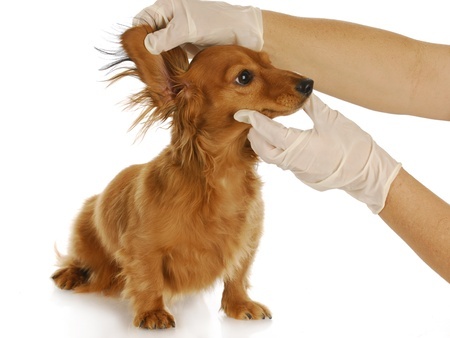Justin Beaver Doesn't Make A Good House Guest
Brigette Brouillard, Second Chances Wildlife Center
 Brigette Brouillard lives in Kentucky and runs Second Chances Wildlife Center where she rescues and rehabs wild animals. At any moment you could see an opossum scurrying through the house or 'Justin Beaver' building a dam out of toys and household furniture. One of her two human children are on-board, even following in her footsteps. The other wants nothing to do with mom's hobby. Brigette tells her story like any proud rodent mama would!
Brigette Brouillard lives in Kentucky and runs Second Chances Wildlife Center where she rescues and rehabs wild animals. At any moment you could see an opossum scurrying through the house or 'Justin Beaver' building a dam out of toys and household furniture. One of her two human children are on-board, even following in her footsteps. The other wants nothing to do with mom's hobby. Brigette tells her story like any proud rodent mama would!
Justin Beaver, whom she calls "JB", came to Brigette in May of 2000, so he has been with her for quite some time. He came when he was just a couple months old and was so tiny, he was still being bottle-fed. JB was supposed to make his way to their rehab center that houses all of their animals, but they were a little slow on the draw. They needed to raise quite a bit of money for his enclosure and get a pond built, which is now in its finishing stages.
Brigette says that JB was found as just an orphan baby all alone. Most likely his parents were either shot or they were drowned. When people find beavers, they don't always like having them around. People are also not very tolerant on trapping and relocating them. So beavers are trapped underwater and they are usually drowned.
Beavers live around 20 years in captivity. They don't live quite as long in the wild of course, because they're exposed to potential risks that they don't in captivity.
JB has had the run of Brigette's house and is far from the perfect houseguest. Brigette explains that she moved into a new house just a couple of months prior to getting JB. She said it used to be very nice but now almost every doorway, door and baseboard has been chewed on. Even her antique furniture has been chewed on. She said this all happens very fast, even with her closely supervising JB.
 Brigette explains that JB needs to be in water, so she puts him in the bathtub about five times a day. She says this makes it very difficult for her to go out for very long stretches. When JB gets out of the bathtub, he tries to dam it up. She says it's really kind of a funny routine that they have developed. Brigette knows when he needs to go out for his regular times and he does make some sounds when he really does need to go to the bathroom. So she puts him in the bathtub and when he is done, he hops on the ledge, but he won't get off the ledge. She has to lift him down. She then towel dries him and then he turns around and finds something to dam up the bathtub. These items may include shampoo bottles, a nearby towel on the floor or even the bathroom rug. He also uses stuffed animals and socks. Brigette explains that if there's one thing lying out, he'll find it. However, his new enclosure is almost ready and he'll have his own pond that he can go to the bathroom in and dam up over and over throughout the day.
Brigette explains that JB needs to be in water, so she puts him in the bathtub about five times a day. She says this makes it very difficult for her to go out for very long stretches. When JB gets out of the bathtub, he tries to dam it up. She says it's really kind of a funny routine that they have developed. Brigette knows when he needs to go out for his regular times and he does make some sounds when he really does need to go to the bathroom. So she puts him in the bathtub and when he is done, he hops on the ledge, but he won't get off the ledge. She has to lift him down. She then towel dries him and then he turns around and finds something to dam up the bathtub. These items may include shampoo bottles, a nearby towel on the floor or even the bathroom rug. He also uses stuffed animals and socks. Brigette explains that if there's one thing lying out, he'll find it. However, his new enclosure is almost ready and he'll have his own pond that he can go to the bathroom in and dam up over and over throughout the day.
While most people have family pics on their walls, Brigette actually has pictures of her animals. One is a painting done by her volunteer team of an opossum that she had for a long time named Big Boy. She also has another picture of three skunks. They are her permanent resident education skunks. She calls that picture "her three sons." However, she does explain that she also has pictures of her human son and daughter on the wall right next to them.
Brigette's two children do not love having animals in the house. In fact, JB regularly jams up her daughter's door. When her daughter tries to open her door, she has to move all of the stuff out of the way before she can fully open it.
Second Chances Wildlife Center runs solely on donations. To donate and help out you can go directly to their website where you will find their address to send a check as well as a PayPal account.
Visit Website
Get Your Pet To the Vet Safely with No Escapees - Dr. Debbie
 A frightening situation occurred the other day at my veterinary hospital. Working inside my office, I could hear a woman's shrieks coming from the parking lot. I ran outside to find a woman with one dog on a leash, and the other dog skittering about the parking lot - the result of a slipped collar. The owner would approach the panicked dog and he'd retreat, darting under nearby cars. Those familiar with our hospital location understand its proximity to a busy intersection. Should the dog run in the wrong direction, he'd meet up with 45 mph traffic.
A frightening situation occurred the other day at my veterinary hospital. Working inside my office, I could hear a woman's shrieks coming from the parking lot. I ran outside to find a woman with one dog on a leash, and the other dog skittering about the parking lot - the result of a slipped collar. The owner would approach the panicked dog and he'd retreat, darting under nearby cars. Those familiar with our hospital location understand its proximity to a busy intersection. Should the dog run in the wrong direction, he'd meet up with 45 mph traffic.
My staff was outside in moments to assist the owner in retrieving her dog and safely escorted everyone into the building. Thankfully my client's few minutes of terror ended uneventfully. But that's not always the case. I've seen dogs run straight into the road, cat's leap from a family member's arms, and owners dive into oncoming traffic trying to catch an escaping pet.
The lesson is simple. Don't underestimate your pets' fears. Fear of car travel, new places or the veterinary office can cause a pet to behave in unpredictable ways. If you know your pet to be nervous with new people or new situations, be especially vigilant when transporting your pet in a vehicle.
Identify Your Pet
Use two methods of identification for best insurance your pet is returned to you if lost. Permanent identification with a microchip is a must and should be complimented with a collar and ID tags.
Restrain Pet in Vehicle
Keep your pet secure during travel and when the car door opens by using a doggie seatbelt. Small dogs and cats should be housed in a pet carrier which is secured with seatbelt to avoid undue carrier movement during travel. Do not allow cats and small pets to roam freely in the car. Cats have been known to take cover under car seats which may require sedation or seat removal to extract kitty from her hiding place.
Check for Proper Fit


 A proper fitting collar allows 2 finger widths between the collar and pet's neck. Allow more than, and should your pet put on the brakes, he'll easily slip out of the collar. Poor fitting harnesses are just as dangerous and allow gap room which allows a back-peddling pet to wiggle out. Not sure if the collar is too loose? Snug the collar up one fitting in anticipation of your trip to the vet.
A proper fitting collar allows 2 finger widths between the collar and pet's neck. Allow more than, and should your pet put on the brakes, he'll easily slip out of the collar. Poor fitting harnesses are just as dangerous and allow gap room which allows a back-peddling pet to wiggle out. Not sure if the collar is too loose? Snug the collar up one fitting in anticipation of your trip to the vet.
Try Other Collar Styles
Even if you don't normally use a choker or pinch collar, consider using one when going to the vet's office. For thick necked dogs with smaller head size, try the Martingale collar, a fabric and metal combo collar that snugs down should your dog try to back out. Boisterous dogs that jump and leap when on leash may benefit wearing a head collar that fits over the muzzle. Ensure your collar choice is properly fitted, since any of these styles can fail if improperly fitted or used incorrectly.
Call Ahead
If you anticipate difficulties getting your pet to the vet's office, call ahead. Veterinary staff members are on the ready to help ensure your pet's visit is a safe one.
So, take a few minutes to consider your pet's travel safety before heading out on that next car trip, whether it is to the park, groomer or veterinary office. Your four legged friend will thank you, but may pout on the way there.
Featured veterinarian known as "Dr. Debbie" on national pet radio program, Animal Radio. Ebook author of "Yorkshire Terriers: How to Be Your Dog's Best Friend"; "Pugs: How to Be Your Dog's Best Friend"; "Mini Schnauzers: How to Be Your Dog's Best Friend"; and "Shih Tzu: How to Be Your Dog's Best Friend." Dr. Debbie's books.
Visit Website
 The Dogfather's Grooming Tip with Joey Villani
The Dogfather's Grooming Tip with Joey Villani
Grooming Your Pet Can Add Years To Their Life
Joey tells us about a recent study that states grooming your pet could add longevity to their life. This is not only because of the brushing and the combing and keeping up with your pet's hygiene, which these things are definitely part of it, but its what you find when you're doing these things.
Surprisingly, your groomer is usually the first to find things on your pet's skin. These include lumps and bumps, irritations, ear infections and even finding urine infections. Having your groomer detecting these things early can be a real lifesaver.
A few weeks ago a friend called Joey and said that while grooming her dog, its ears didn't smell right but she didn't see anything. Joey advised the woman to take her dog to the vet. The dog almost died within 48 hours. This is because there was an ear infection that wasn't seen, as it was in too deep.
If this woman wasn't paying attention to her dog's hygiene and she wasn't wiping out the ears routinely and smelled something wrong, it could have been a catastrophe.
 So, grooming your pet is important. This isn't just brushing and combing your pet. You should pay attention and look in areas that you don't normally look at. A lot of people don't pick up their dog's tail and look at their dogs behind. This is just something that most people don't do. However, Joeys says he does it every single day. This is because a lot of times you find things in areas that you normally wouldn't think of.
So, grooming your pet is important. This isn't just brushing and combing your pet. You should pay attention and look in areas that you don't normally look at. A lot of people don't pick up their dog's tail and look at their dogs behind. This is just something that most people don't do. However, Joeys says he does it every single day. This is because a lot of times you find things in areas that you normally wouldn't think of.
So check your dog's pads, look in their ears, brush them, comb them and even check under their armpits and under their tail. If you feel something, see something or smell something that's not right, have it checked out.
Just remember, grooming could give you pet longevity. So if that's your best friend, why not give them the once over with a good grooming and who knows, you could save their life!
Animal Radio News - Lori Brooks
 Judges Decide Custody of Pets in Divorce Cases
Judges Decide Custody of Pets in Divorce Cases
California has enacted a new law that gives judges the power to consider what's in the best interests of pets in divorce cases, instead of treating them as physical property like a car or a sofa. It allows judges to consider "the care of the pet" then create shared custody agreements for the animal. The legislator who wrote the bill said he was inspired to write it because in the past, there were actually judges who told couples, "You can sell the dog and split the proceeds!" This new law means judges can take into consideration factors like who walks, feeds and plays with the pet when deciding who the animal should live with. The law doesn't just apply to dogs, it defines "pet" as "any animal that is community property and kept as a household pet." A national survey of divorce lawyers a few years ago found 88-percent of pet custody fights were about dogs and only 5-percent about cats.
California Pet Stores Can Only Sell Animals from Shelters
A new California law is changing pet store sales, making it the first state to ban retail sales of certain pets in an effort to crack down on puppy mills. It says pet stores can only sell cats, dogs and rabbits that come from local rescue groups, shelters or animal control agencies. Store operators will face a $500 fine for any violation of the law.
 Is Your Cell Phone Full of Pet Pics? Taking Pic of Pet
Is Your Cell Phone Full of Pet Pics? Taking Pic of Pet
If you've got your cell phone close, take a quick look at the pictures you've taken. Do you see more pet pictures than pictures of your significant other? The results of a new study from Rover.com show 65-percent of dog owners take more pictures of their dogs than their husbands, wives, girlfriends or boyfriends. The study also claims that nearly half of the people polled find it harder to leave their dog for a week than their human counterpart. Ninety-four percent of dog owners surveyed say their dog is part of the family and 56-percent of dog moms and dads greet their dog at the door first, before saying hello to any humans.
Genetics Play A Role In Our Love of Animals
Scientists have discovered a genetic difference in animal lovers. This genetic difference lies in a gene that is responsible for producing a hormone called oxytocin, commonly called the love hormone. Oxytocin boosts bonding between people, but this is the first time the hormone has been linked to relationships between people and animals. Researchers at the University of Edinburgh's Roslin Institute and Scotland's Rural College found those who showed the greatest compassion for animals had a different version of the oxytocin gene. They also found women responded more positively towards animals than men, as did those working in a profession related to animal care. Of course, people's attitudes towards animals are influenced by a variety of social factors, such as early life experiences, personality traits and religious beliefs. However, this is the first time scientists have shown that genetics may also play a role in our human love of animals.
 Adopt A Fat Cat and Lose Weight Together
Adopt A Fat Cat and Lose Weight Together
Losing weight is still one of the most popular changes people hope to make in the New Year. In South Carolina, an animal shelter had a genius idea to help someone who wanted to lose weight and help an overweight cat at the same time. The shelter teamed up with a fitness center to offer free personal training sessions to the human who adopts the overweight cat named Purrsilla. The deal is worth about $400 and gets Purrsilla a health minded human to help her lose the extra pounds and a new home.
Man Shoots His Dog In Front of Children
Police in Hamden, Connecticut say a man shot and killed his own dog in a park because he feared it might attack some children who were close by. The man told police that his dog, a pit bull that was not on a leash at the time, attacked and seriously injured another dog that was on a leash. He shot his dog in front of the owner of the injured dog as well as that man's three children. The owner of the dog was licensed to carry a gun. However, the entire situation could have been avoided if the man had had his dog on a leash. But because the dog was running loose in a park, that dog is dead, another dog was injured and three kids had to watch the whole ugly scene they will likely never forget.
 Listen to the entire Podcast of this show (#998)
Listen to the entire Podcast of this show (#998)





